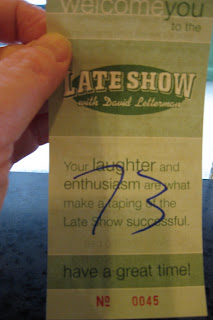
I got an e-mail from Broadway Across America today explaining a little bit about how shows go about finding theaters.
For a relative novice like myself, it was pretty interesting. Some things I knew, like most Broadway theaters aren't actually on Broadway. But one thing I didn't realize is that a theater has to have at least 500 seats to be considered a Broadway house. I also hadn't realized the complex process that goes into matching a show with the right space. You have to take into account the size of the set, whether it's a large, technically oriented spectacle or something more intimate, whether it's a play or a musical. Also, in some cases, knowing where a show will play can make it easier to raise money from investors.
It was startling to read that, "For many years in the 1970s and 80s, booking a show into a theater was not difficult. Broadway was littered with empty legit houses, and producers had the choice of any number of vacant theaters." I knew that from watching the PBS documentary "Broadway: The American Musical," still it's amazing to look at what Times Square is like now and realize what it was like before the city cleaned it up in the 1990s.
Today, all 39 Broadway theaters are booked. “The ability to get a theater is at a premium now,'' says Nick Scandalios, executive vice president of the Nederlander Organization, which owns nine theaters. "There is no set process for booking a theater. The fact is most producers know all of the theater owners. Sometimes, it just takes a phone call.”
Scandalios offers some insight into what he calls the "symbiotic dance" between producers and theater owners, especially when a show isn't selling enough tickets to keep it viable. Because of the high demand for theaters, Scandalios explained that “there is an ongoing conversation between theater owners and producers regarding the closing of a show. It is a delicate dance to keep everyone feeling good about the production in question.” Hmmm, I bet that "ongoing conversation" is touchy one when the show isn't doing so well!
I'm going back to New York this weekend and Monday night, I'm seeing "Young Frankenstein," my 16th Broadway show since April. (If you add the second time I saw "A Moon for the Misbegotten," "Gypsy" at City Center and the one off-Broadway show I'm planning to see, it's actually 19 shows in six months). When you add in the money I spent on train tickets, hotel rooms, restaurants, cab rides, the subway and souvenirs, well, you can begin to understand why Broadway plays such a vital role in keeping New York City's economy healthy.
And I think it really does trickle down to the rest of the country. Already this year, I've seen "Hairspray" and "Wicked" on tour. In the next six months, I'll see "The 25th Annual Putnam County Spelling Bee," "Spamalot," "The Wedding Singer," "Rent," and "The Drowsy Chaperone." I don't know how many of those shows would ever have seen the light of day without a vital, vibrant Broadway theater scene.
On tour across the United States, each of those shows helps keep a city alive and safe by filling a downtown performing arts center and nearby restaurants and shops. Hopefully, it also creates interest in other theater offerings in the city that aren't tours of big Broadway shows. I know it did for me.





















